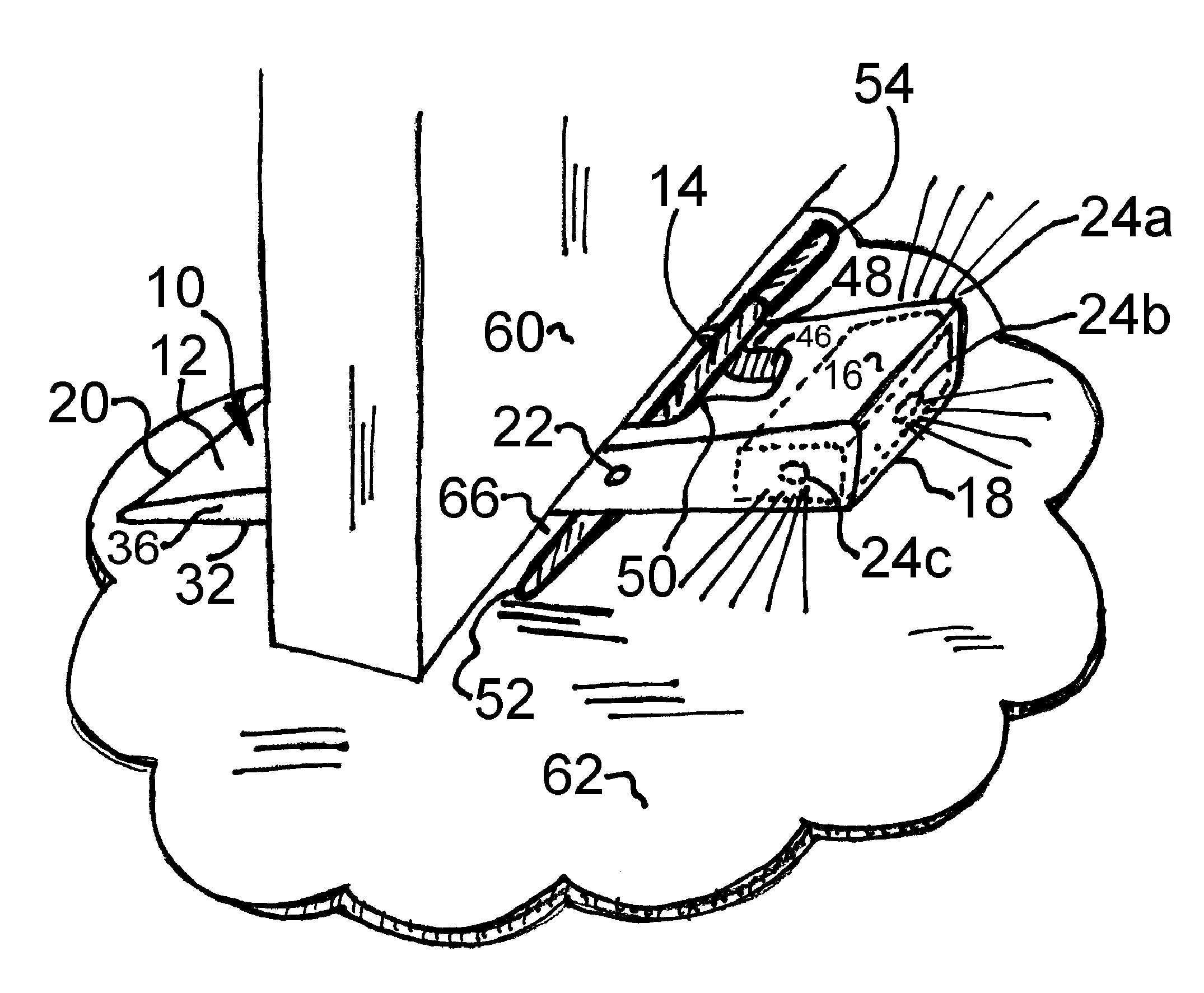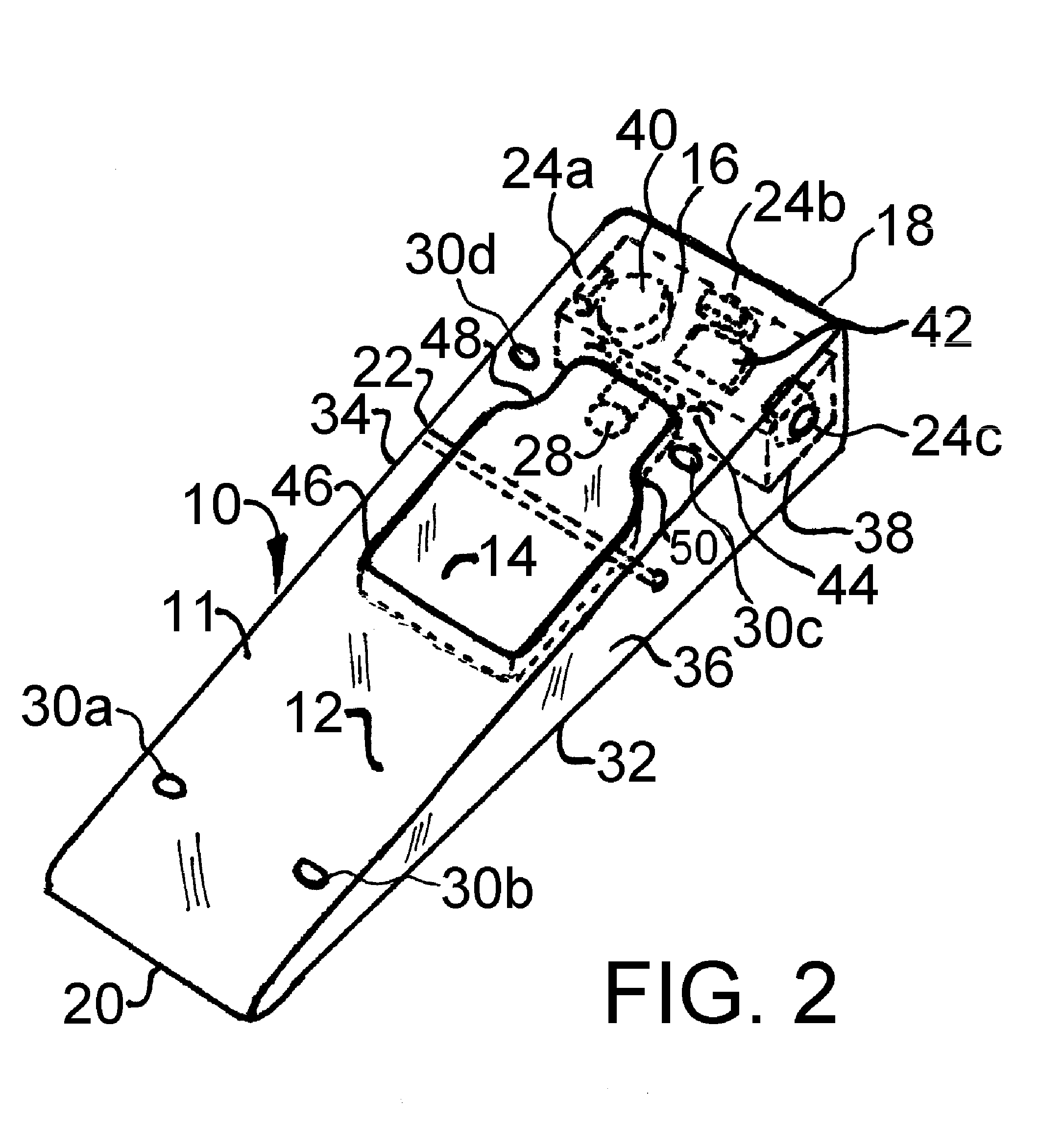Intrinsically-safe ramp for use by rescue personnel
a safety and rescue technology, applied in the field of tools and hardware, can solve the problems of limiting the number of doors that can be secured, the difficulty of transporting many wedges, and the significant fatigue factor, and limiting the number of apparatus that a rescuer may feasibly carry
- Summary
- Abstract
- Description
- Claims
- Application Information
AI Technical Summary
Benefits of technology
Problems solved by technology
Method used
Image
Examples
Embodiment Construction
[0043]Referring to the drawings, the ramp of the present invention is generally designated by the numeral 10. As shown in FIG. 1, the ramp 10 is in its normal, collapsed state and bears the major structures of a main ramp body 11 having a planar and textured lower portion 32 with an opposing, inclined and textured upper portion 12. An acutely-angled front edge 20 is opposed by a slightly taller rear edge 18 and supported by integral and monolithically-composed sidewalls 34 and 36 respectively whereby a low-profile ramp is fashioned thereof. Additionally, the ramp body 11 bears a rotatable member 14 which lies within a through opening 46 and is attached with a sturdy metal dowel pin 22 passing therethrough which partially embeds into sidewalls 34 and 36. A magnet 28 is disposed at an edge of the rotatable member 14 which lies in proximity to an electronic module 16 and more specifically to a magnetically-operable switch 44 housed within module 16 wherein a wireless control interface ...
PUM
 Login to View More
Login to View More Abstract
Description
Claims
Application Information
 Login to View More
Login to View More - R&D
- Intellectual Property
- Life Sciences
- Materials
- Tech Scout
- Unparalleled Data Quality
- Higher Quality Content
- 60% Fewer Hallucinations
Browse by: Latest US Patents, China's latest patents, Technical Efficacy Thesaurus, Application Domain, Technology Topic, Popular Technical Reports.
© 2025 PatSnap. All rights reserved.Legal|Privacy policy|Modern Slavery Act Transparency Statement|Sitemap|About US| Contact US: help@patsnap.com



